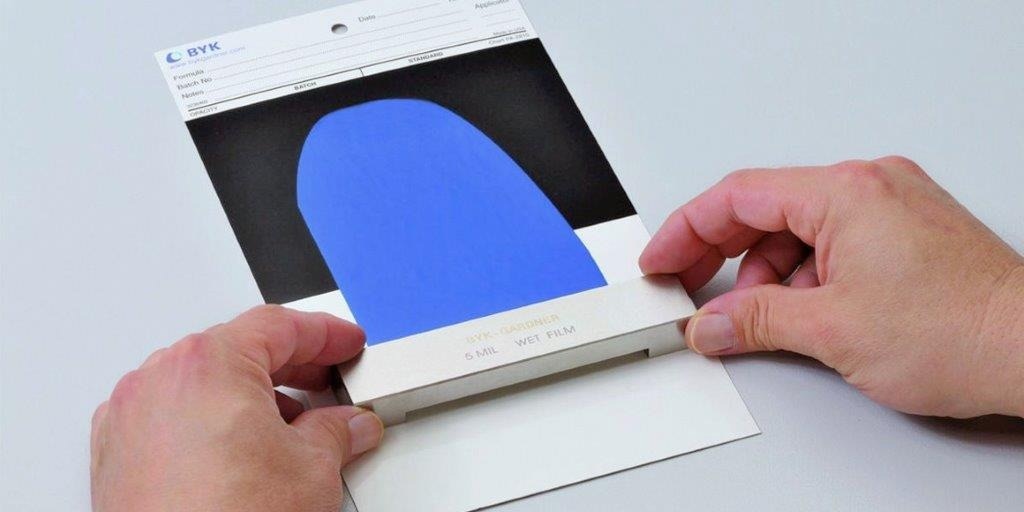Various industries rely on drawdowns for standard testing purposes, including paints, inks, adhesives, paper, electronics, pharmaceuticals, food, packaging, and more.
These tests adhere to multiple standards like ASTM D823, ASTM D3258, Federal Specifications TT-P-29, TT-E-50BA, PD-220A, FTMS 141a, JAN JAN-P-630, JAN-P-700, and Military Spec. MIL P-13341.

Image Credit: Paul N. Gardner Company, Inc.
Completed drawdowns measure color, gloss, opacity, pigment dispersion, wettability, dry weight, drying time, scrub resistance, pigment and dye uniformity, clarity, and adhesion.
High-quality Drawdown Bars, also called Bird Type Applicators or Doctor Blades, ensure a consistent film thickness. This is crucial as many coating properties rely on thickness.
The initial step in selecting a drawdown bar involves determining the ideal film thickness for a specific application. This can be done by experimenting with various thicknesses until you identify the one that yields optimal product performance.
The Gardco Microm Film Applicator, an adjustable thickness applicator, is a valuable tool for this purpose, offering high precision in creating different film thicknesses. It is essential to note that a drawdown's wet and dry film thickness will be lower than the applicator's gap clearance. Many factors affect the drawdown process, with actual wet film thickness ranging from 40% to 90% less than the gap, and dry film thickness varying even more.
Variables like gap clearance, coating viscosity, percent solids, solvents, drawdown speed, surface energy, and substrate absorptiveness impact wet and dry film thickness. ASTM D823 provides further details on this topic.
Typically, a bar's Theoretical Wet Film Thickness measures around 50% less than the listed gap clearance. For instance, with a gap clearance of 6 mils, the theoretical wet film thickness approximates around 3 mils.
Once the desired film thickness is determined, consider the bar width based on the substrate's width for the drawdown. Common substrates include Drawdown Charts in various sizes, but almost any uniform, flat substrate works.
Opting for a standard width drawdown bar, if available, is recommended due to accessibility and cost-effectiveness. Ensure a flat, consistent surface beneath the substrate, like a Glass Drawdown Plate or vacuum plate.
An Automatic Film Applicator is preferable for consistent results, as manual drawdowns might vary due to varying operator speed and pressure.
Lastly, selecting a one-piece 440-grade stainless steel bar is advisable for easy cleaning, maintenance, and long-term durability.

This information has been sourced, reviewed and adapted from materials provided by Paul N. Gardner Company, Inc.
For more information on this source, please visit Paul N. Gardner Company, Inc.